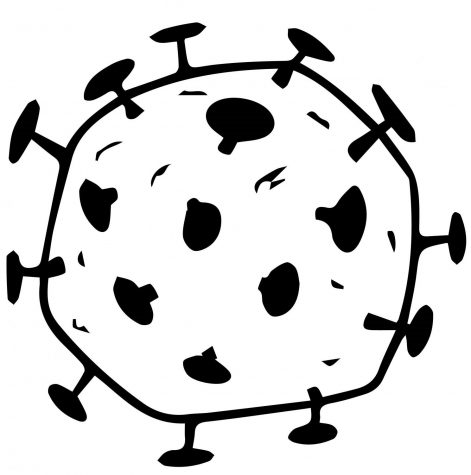Coronavirus: the newest public health crisis
March 22, 2020
The 2019 coronavirus outbreak in Wuhan, China, is the latest scare in the world of infectious diseases. While it is not the first occurrence of this virus, the 2019 reemergence has caused global concern similar to that of Ebola in 2016. So what’s going on?
 Officials believe the respiratory illness, officially named COVID-19, came from livestock in an outdoor market in Wuhan City. Only a few people actually caught it from the animals, but once they did, it began spreading among the human population.
Officials believe the respiratory illness, officially named COVID-19, came from livestock in an outdoor market in Wuhan City. Only a few people actually caught it from the animals, but once they did, it began spreading among the human population.
“Viruses are transmitted by air, through coughs and sneezes, and by physical contact, either with surfaces or other humans,” school nurse Anissa Pascale said. In a city like Wuhan, with a population density 12 times that of the American metropolitan average, the virus easily began infecting tens of thousands through these two methods.
At the time of publishing, it has killed more than 3,100 victims and presented in over 92,000 people, most of whom are in mainland China.
 The Chinese government is working furiously to contain the outbreak, which hit during the Lunar New Year. Officials have shut down numerous schools, businesses and cities, extended the holiday break for working citizens, and quarantined countless individuals who may have come into contact with the illness.
The Chinese government is working furiously to contain the outbreak, which hit during the Lunar New Year. Officials have shut down numerous schools, businesses and cities, extended the holiday break for working citizens, and quarantined countless individuals who may have come into contact with the illness.
Among those quarantined is Diamond Princess, a Japanese cruise ship carrying more than 3,500 people. More than 700 cases of the virus have emerged aboard the liner, it has to stay at sea until further notice. Most passengers are stuck in their rooms all day, afraid to leave their quarters and risk becoming infected.
Other heavily affected countries include South Korea, Italy, and Iran, which have a combined total of well over 10,000 cases.
 The US has begun experiencing outbreaks as well. Washington is the hardest-hit state, with 27 cases and nine deaths at the time of publishing. Multiple schools have been temporarily canceled as a preventative measure, but there have been no confirmed cases of the virus in the Issaquah School District.
The US has begun experiencing outbreaks as well. Washington is the hardest-hit state, with 27 cases and nine deaths at the time of publishing. Multiple schools have been temporarily canceled as a preventative measure, but there have been no confirmed cases of the virus in the Issaquah School District.
So how can students protect themselves against COVID-19 and other viruses? “Wash your hands, stay hydrated, and cover your cough and sneeze with your elbow,” Pascale said.  “Washing your hands is the absolute best way to prevent the spread of any bacteria or virus.”
“Washing your hands is the absolute best way to prevent the spread of any bacteria or virus.”
For the Liberty population at large, following these simple steps will diminish the risk of infection, and in general, the disease poses very little risk to teenagers with a healthy immune system. As long as students maintain hygienic habits, COVID-19 is not a threat.


